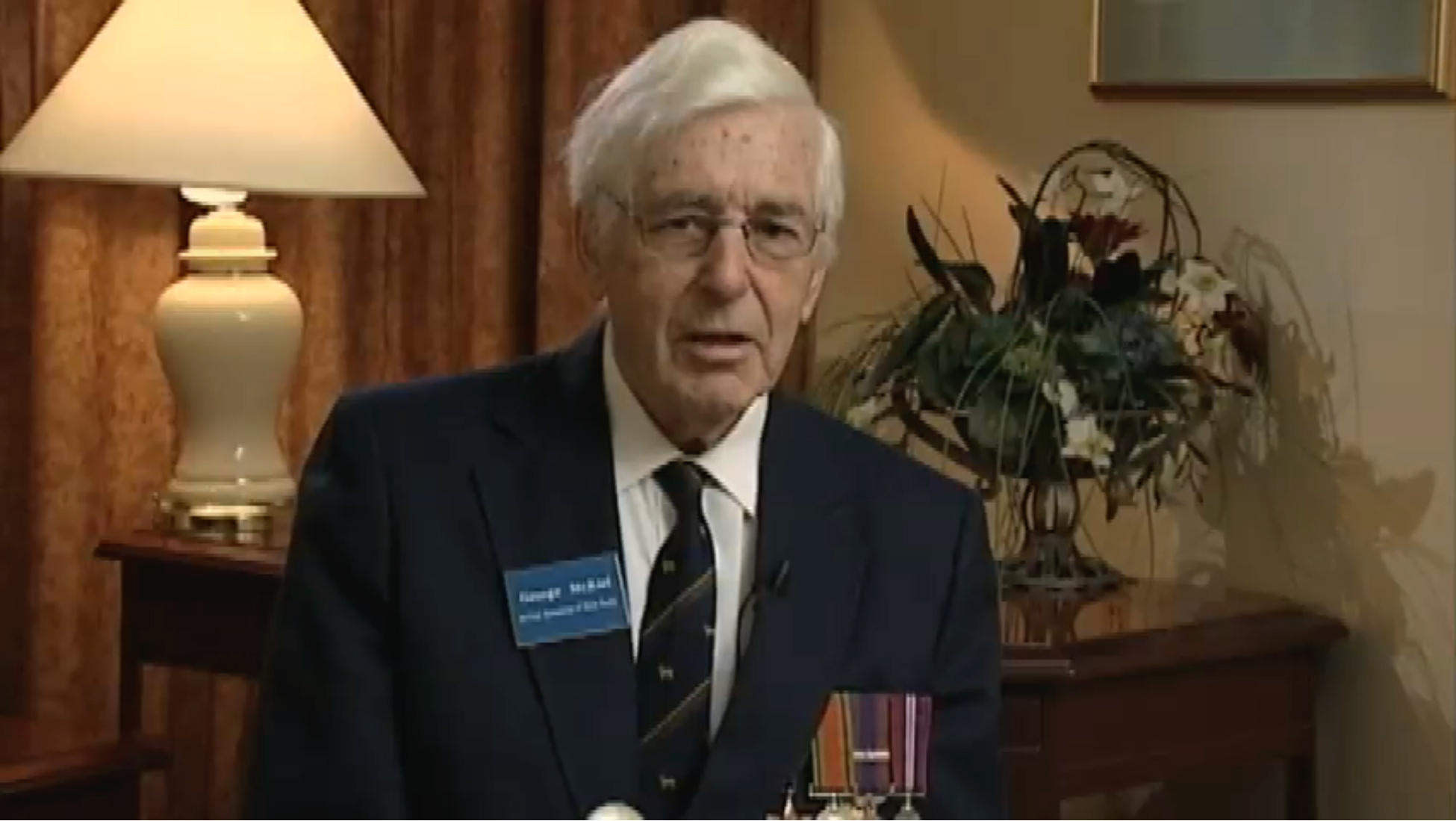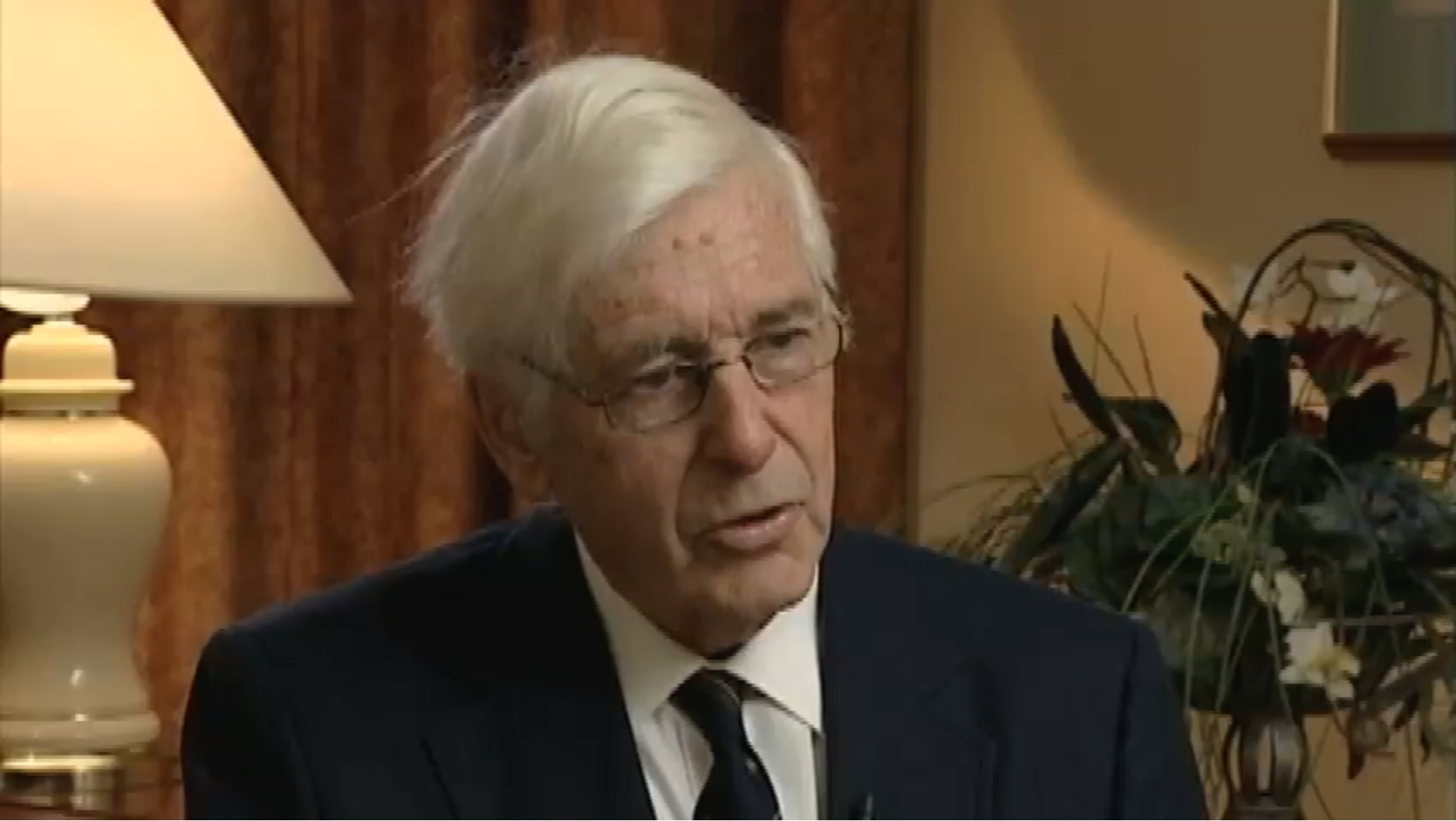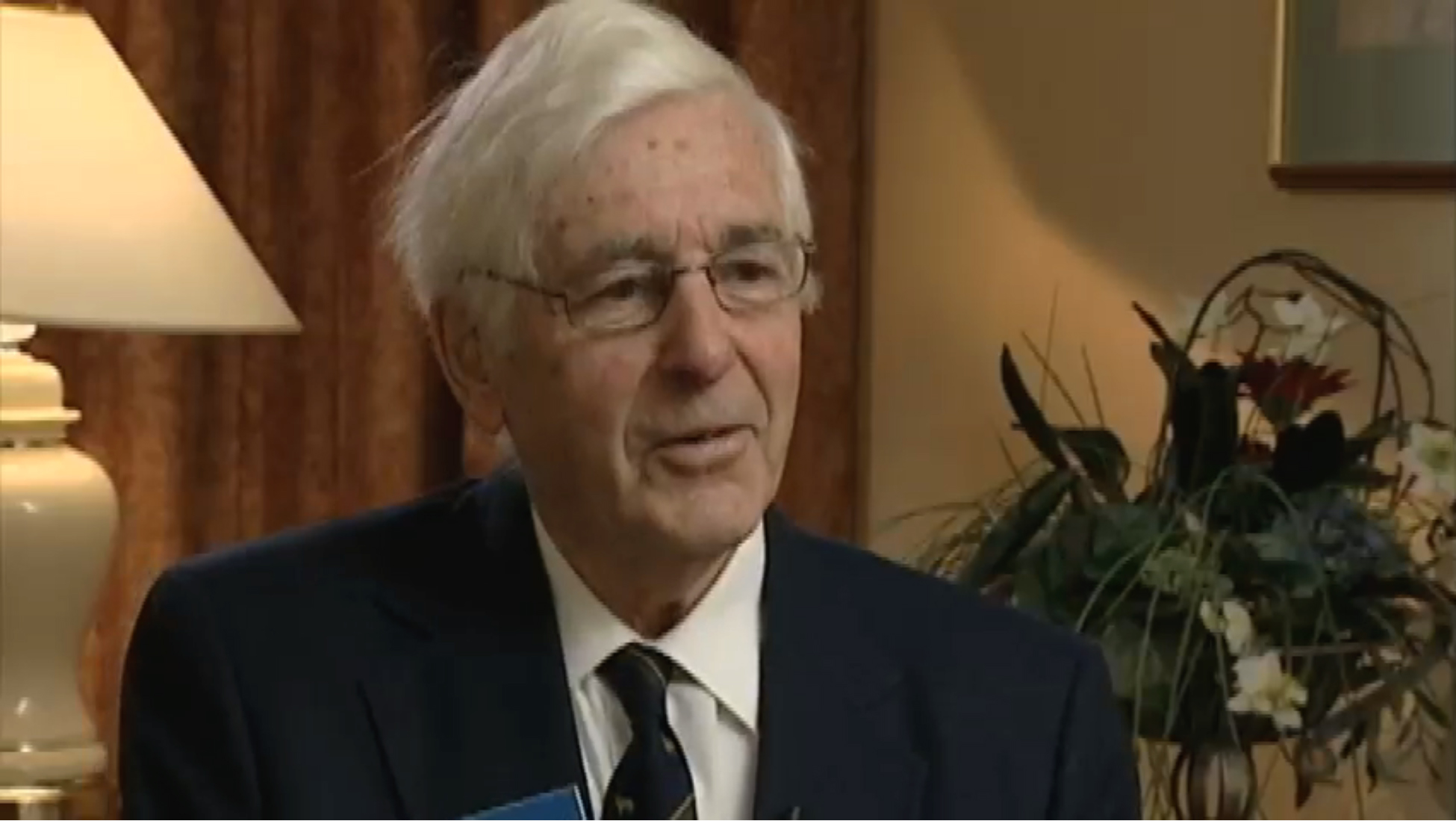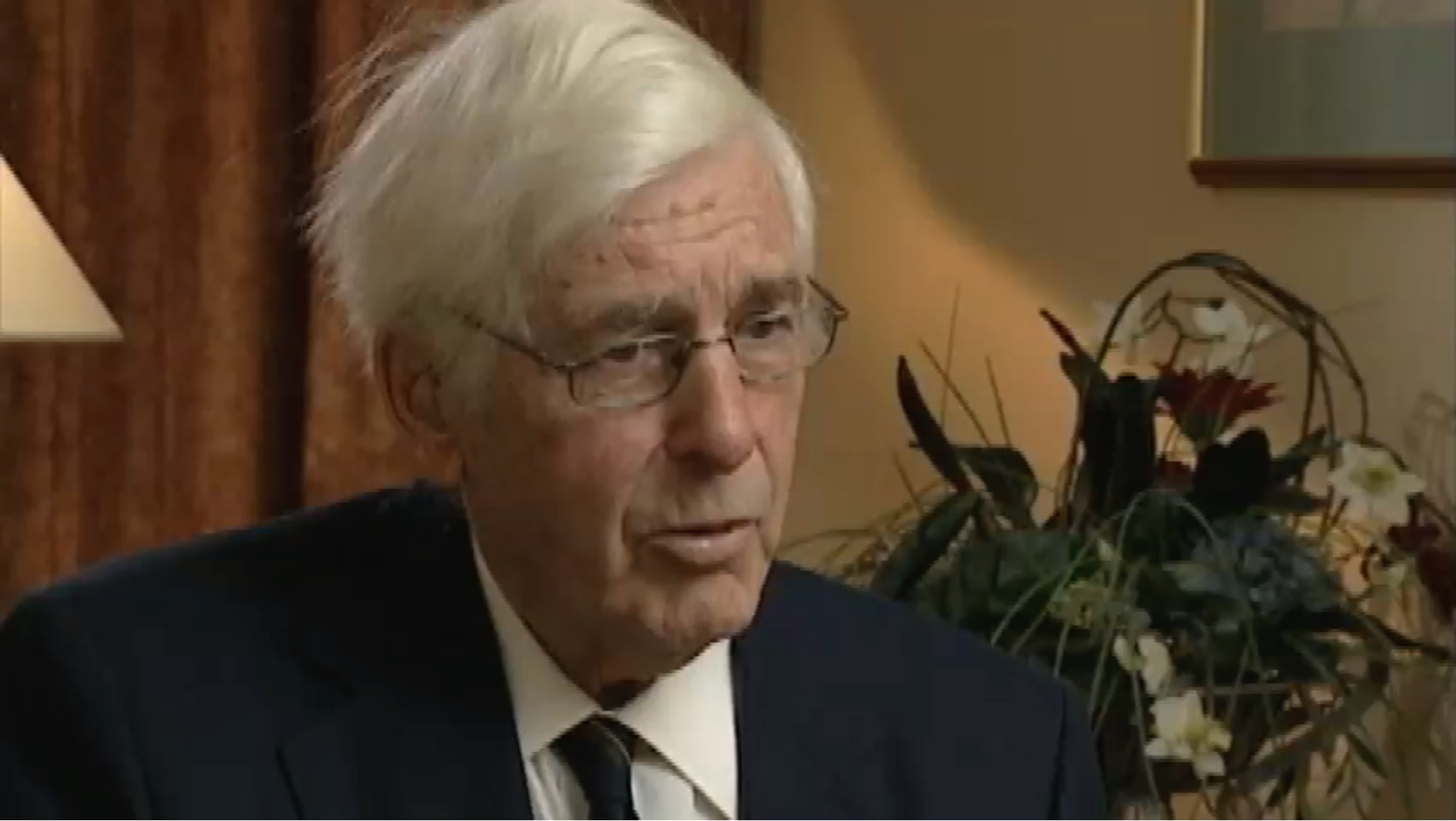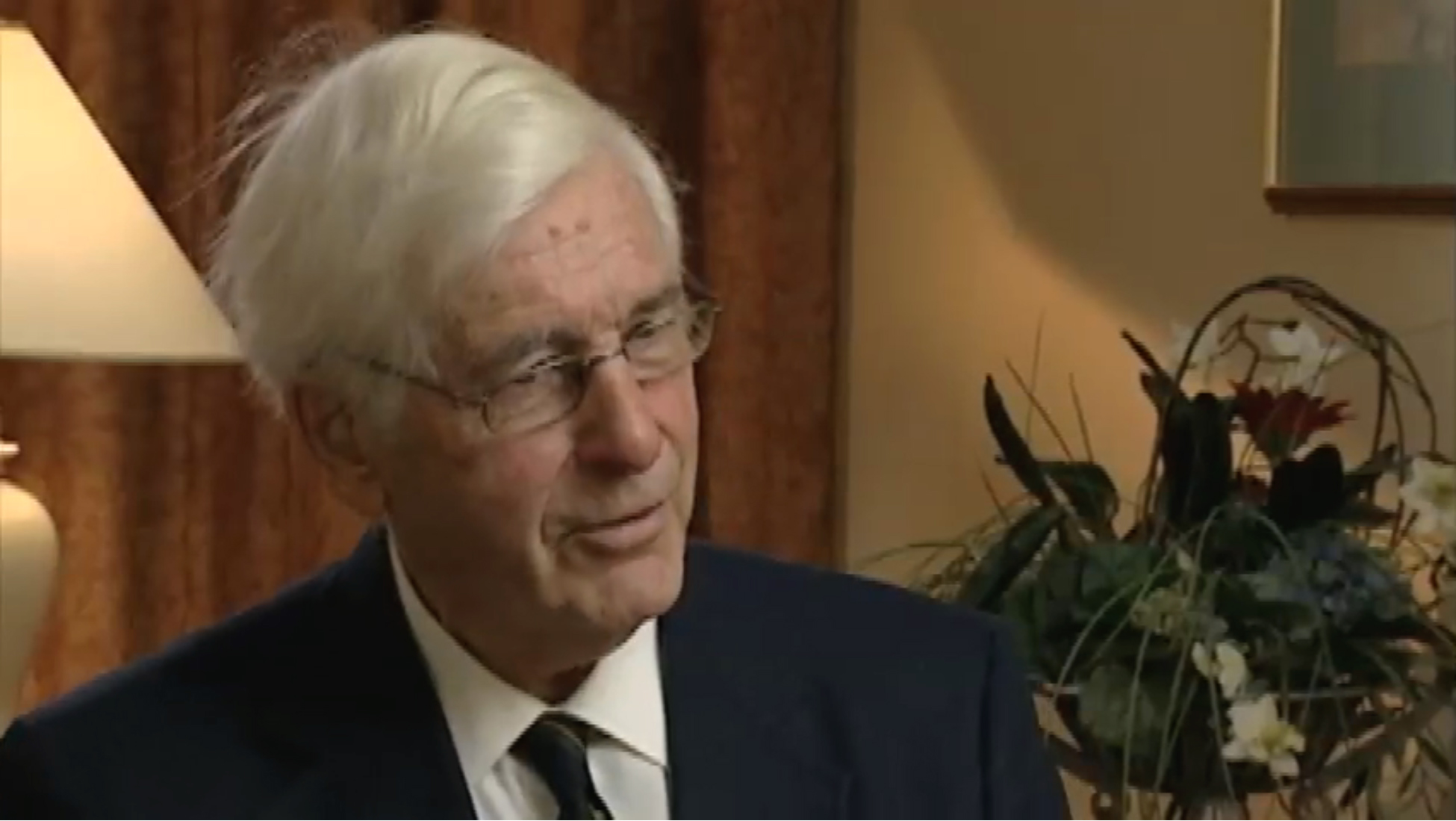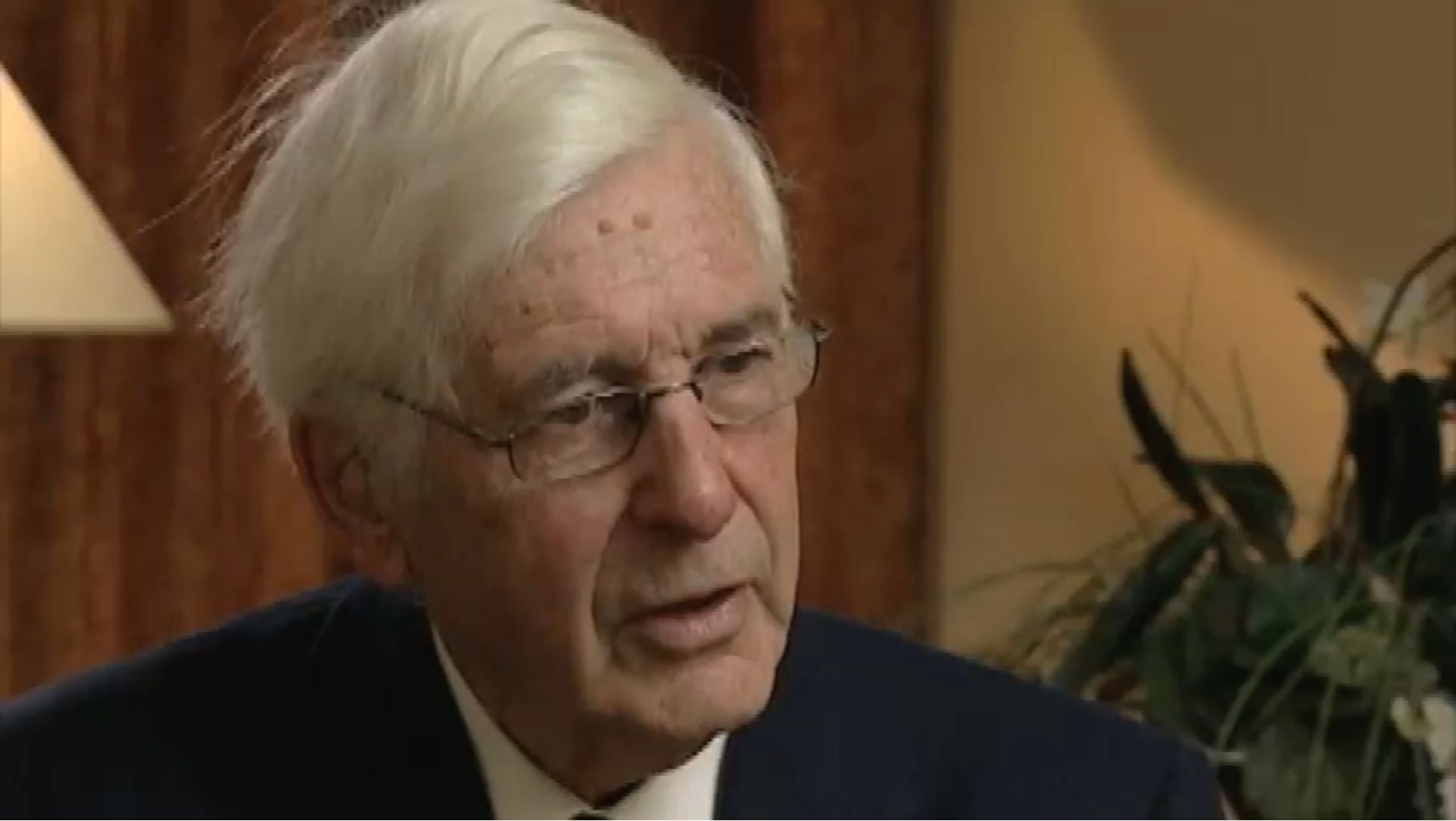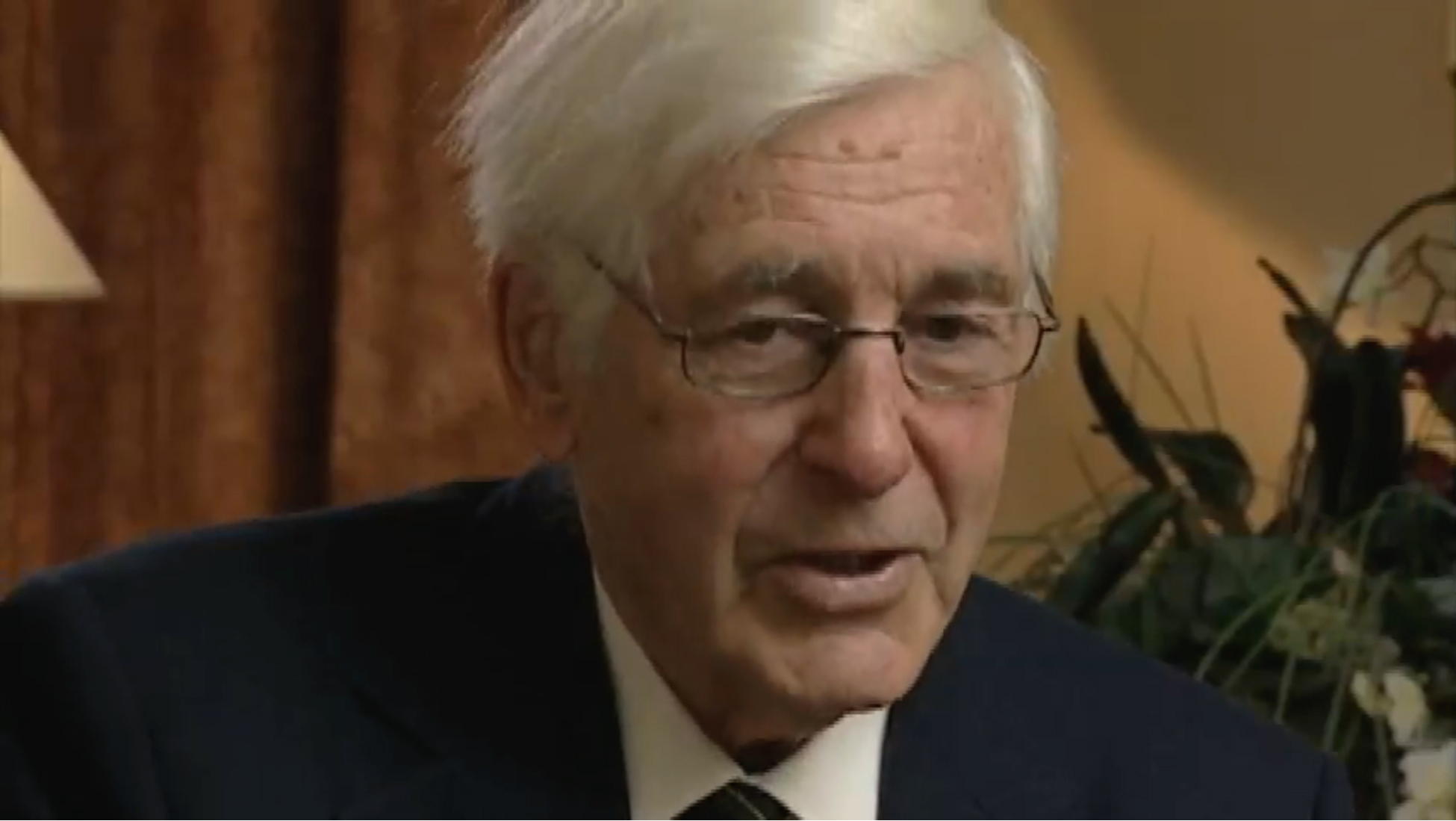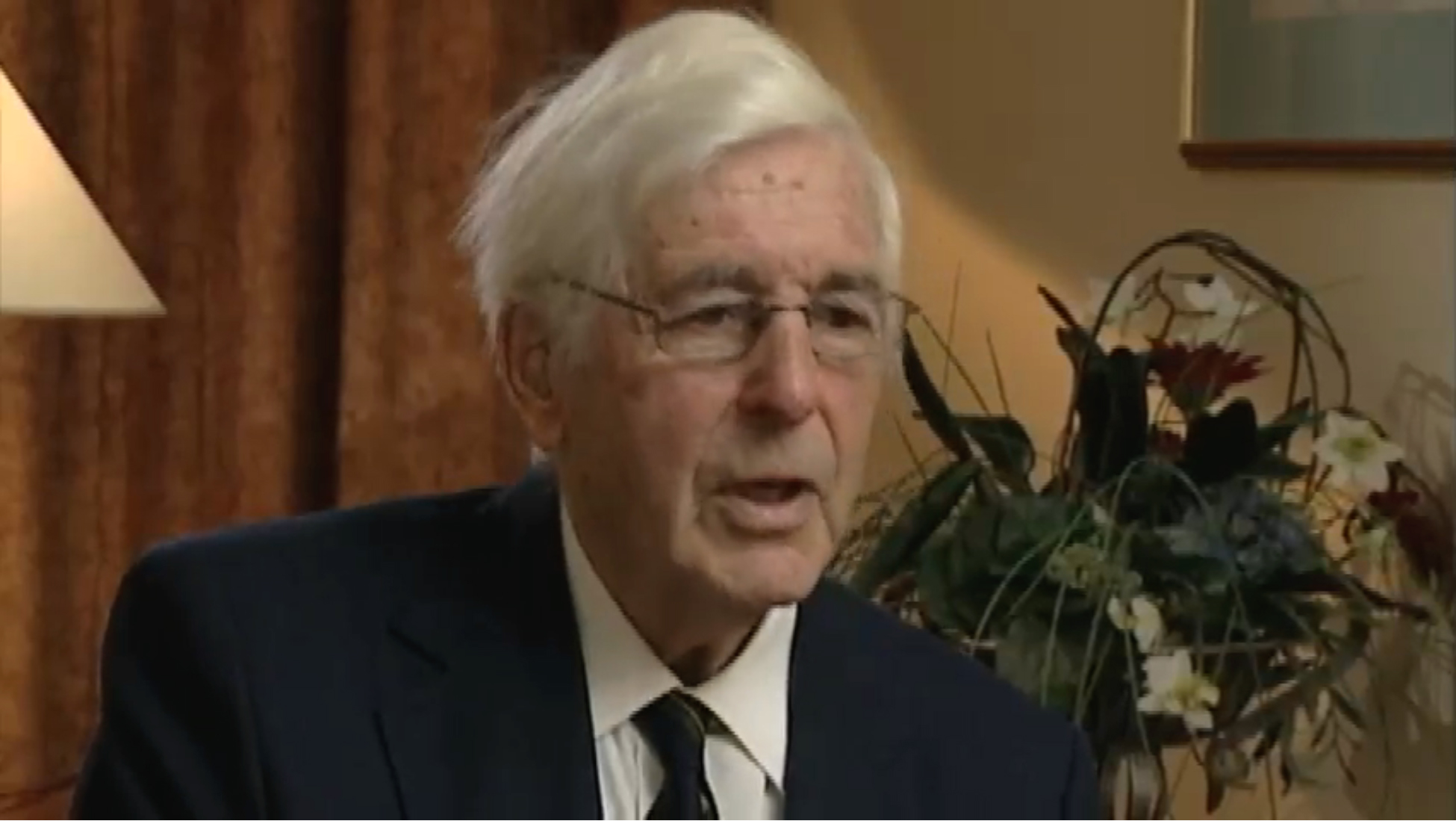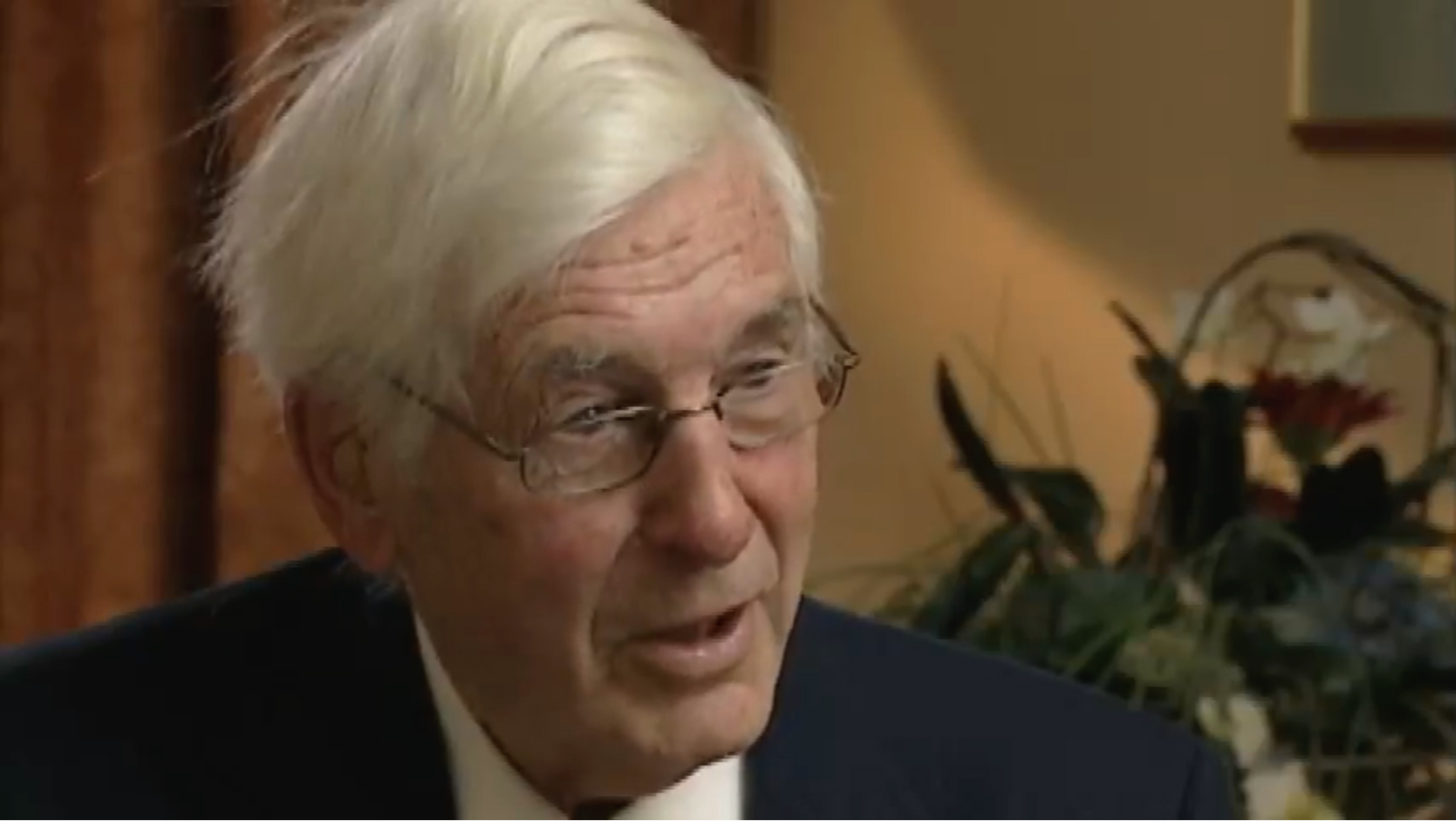The Tunnel
Heroes Remember
The Tunnel
Transcript
Diagram of the tunnel from Hut 104.
would come up in woodland. There was a path outside the wire and then there was a woods on the other side. Well, when the tunnel actually broke, it was in a state of readiness, and what made it such a success was that the whole thing had been shored up with wood which was donated from our bunks. We had in these two-tiered bunks - wooden slats, and they were ideal for keeping the sand from falling in on the tunnel. And, so, everybody donated a board, and then next week, it was everybody donated another board, and we explained to the Germans that they were not giving us enough coal for the stoves, that it was so cold that we had to burn some of our bed boards. So, they bought that, but it meant that every single inchPictures of the guard tower and tunnel from the inside.
of the tunnel was shored up on the sides, across the top and down the other side. And then on the bottom of the tunnel, the tunnel was only two feet by two feet, and that's a pretty small space, and if you have any claustrophobia you can really appreciate that you had to crawl in this black hole. But then a strange thing happened, a group of prisoners happened to notice that some rather careless workmen had, for a few minutes, left a big bail or boll of, of wire, electric flux, and, so, they quickly nabbed it, and it disappeared and it was hidden carefully, and they were able to wire the whole tunnel with electric light and tap it into the German electrical system. So, that was a big help because it meant that instead of having a black hole to contend with, you could at least have light all the way along the tunnel. The other thing about it was that there were two spaces along the tunnel, sort of rest stations and reception areas, where they could take the sand from the front end and move it back into - they were called Piccadilly Circus and Leicester Square - and then the sand could be taken back. And the other thing that happened in the tunnel, was that they had a system of bellows, at the end, right below where the tunnel began and there was a man always on the pumps, hand pumps, changing the air in the tunnel because it became very bad from being in such a small area, and even the exertions of two tunnellers, it would be bad air. Then the other thing that happened was that to get people and the sand back, they had to devise some trolley system because if they hit the bed boards, they might dislodge them and thereAnother picture of the tunnel, showing the wooden railway line for the trolley.
would be a fall in. So, what they did was they built a railway line of wooden rails and a little flat trolley that you could lie down on, and then with a long, long rope you could be pulled through the tunnel, and the same thing applied to the sand. So, it was working pretty well as far as excavation was concerned. They were able to do, with intensive digging, they could probably do somewhere in the range of four to five feet in one day. But they didn't find the tunnel, they didn't find the beginning of the tunnel. There was no evidence that they knew anything about it. Now, it wasn't the only tunnel that was going. Actually, there were three tunnels on the go at any given time. Tom, Dick and Harry they were called. Harry was the one that was successful. Tom was discovered by the Germans themselves, inadvertently, and it's just a fluke that they happened to find it because it was, it was a very cleverly contrived entrance to the tunnel. It was in a shower, and they managed to get down under in the drains and then enlarge it, but had sufficient sense to be able to cover it over with some dirt each time that it was not actually being in use. So, that was two tunnels left, and then they decided that they would shut down the second tunnel and, and used it instead for storing excess sand from Harry.Description
Mr. McKiel describes the tunnel and its construction.
George McKiel
Mr. McKiel was born in Lunenburg, Nova Scotia, on May 15, 1924. His mother was a war bride, and his family moved to Devon, England, when he was quite young. Mr. McKiel joined 405 Squadron, Bomber Command in 1943, and was shot down and captured shortly thereafter. He spent 2 years in a Polish prisoner of war (POW) Camp, Stalag Luft 3, where he helped 76 officers escape in the Great Escape. After his liberation, Mr. McKiel returned to Canada and eventually earned a PhD in Cancer Research. These credentials have allowed him to consult on Nursing issues as far away as Australia. Having recently returned to Lunenburg, Nova Scotia, Mr. McKiel is already involved with seniors' health programs in his community.
Meta Data
- Medium:
- Video
- Owner:
- Veterans Affairs Canada
- Duration:
- 04:40
- Person Interviewed:
- George McKiel
- War, Conflict or Mission:
- Second World War
- Location/Theatre:
- Poland
- Battle/Campaign:
- Bomber Command
- Branch:
- Air Force
- Units/Ship:
- 405 Squadron
- Rank:
- Flying Officer
- Occupation:
- Air Bomber
Related Videos
- Date modified:



